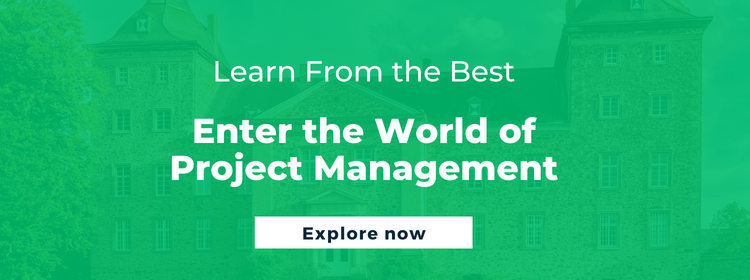How to Improve Effectiveness with Program Life Cycle Management

- What is Program Life Cycle Management?
- Program Life Cycle Phases
- What are the Steps in a Program Life Cycle Management?
- Program Life Cycle Vs Project Life Cycle
- Management Framework for Programs
- Example of Mapping Program Management Lifecycle to Program Activities
- Why Embrace an Adaptive Program Management Lifecycle
Program life cycle management is a systematic approach for managing the development, implementation, and maintenance of large-scale programs and projects. It encompasses all the stages of a program’s life cycle. Let’s take a detailed look at program life cycle management and understand how it helps an organization succeed.
What is Program Life Cycle Management?
Program life cycle management is the process of planning, executing, and closing the work of a program to achieve specific goals and meet the success criteria. It involves coordinating and managing various projects and activities to deliver a solution that meets business needs and objectives. Effective program life cycle management requires clear communication, risk management, and continuous improvement to ensure successful outcomes.
Program Life Cycle Phases
The program life cycle typically consists of the following phases:
Phase 1: Initiation
In this phase, you describe the business needs and objectives of the program and obtain approval to proceed.
Phase 2: Planning
This involves defining the program in detail, including goals, deliverables, resources, budget, and timeline.
Phase 3: Execution
Here, you implement the plans and deliver the program’s outputs.
Phase 4: Monitoring and Controlling
At this stage, you regularly monitor progress, control risks, and make adjustments to ensure that the program stays on track to meet its goals.
Phase 5: Closing
Lastly, you complete the program, document its results, and transition its outputs to the operations or maintenance phase.
What are the Steps in a Program Life Cycle Management?
Step 1: Define the Business’ Needs and Objectives for the Program
Identify the problem or opportunity that the program will address and establish clear goals and objectives for the program.
Step 2: Develop a Program Charter
This document outlines the program’s purpose, goals, and stakeholders.
Step 3: Define the Program’s Scope
At this point, you determine the boundaries of the program and what it will include and exclude.
Step 4: Establish a Program Management Office (PMO)
The PMO is responsible for overseeing the program and ensuring its success.
Step 5: Develop a Program Plan
This document outlines the detailed plans for the program, including goals, deliverables, resources, budget, and timeline.
Step 6: Obtain Approval to Proceed
This step is needed to ensure that all stakeholders agree on the program’s plans and have given the approval to proceed.
Step 7: Execute the Program
You now implement the program’s plans and deliver its outputs.
Step 8: Monitor and Control Progress
Managers have reached the point where they have to regularly review progress, identify and address risks, and make adjustments as needed to keep the program on track.
Step 9: Close the Program
This is the penultimate step where you complete the program, document its results, and transition its outputs to the operations or maintenance phase.
Step 10: Conduct a Program Review
At the end, you evaluate the program’s results, identify the lessons learned, and make recommendations for improvement.
ALSO READ: What is Agile Project Management and How to Use it Effectively
Program Life Cycle Vs Project Life Cycle
| Program Life Cycle | Project Life Cycle |
| Focuses on achieving strategic business objectives, often across multiple projects and initiatives | Focuses on delivering specific outputs, such as a product or service |
| Involves the coordination and management of various projects to deliver a solution that meets business needs | Projects are typically standalone entities and not part of a larger program |
| Typically larger and more complex than individual projects, requiring a more strategic and comprehensive approach to management | Projects are usually smaller and less complex than programs requiring a more tactical and focused approach to management |
| Often have a longer timeline and focus on long-term outcomes | Typically have a shorter timeline and focus on specific, immediate outcomes |
Management Framework for Programs
A program management framework is a set of processes, techniques, and tools that support the planning, execution, and closing of a program. It provides a structure for managing the program and ensuring its success. A program management framework typically includes the following elements:
Program Charter
A document that outlines the program’s purpose, goals, and stakeholders
Program Plan
A detailed plan for the program, including goals, deliverables, resources, budget, and timeline
Program Management Office (PMO)
A team responsible for overseeing the program and ensuring its success
Risk Management
A process for identifying, assessing, and mitigating risks affecting the program
Stakeholder Management
A process for engaging and communicating with stakeholders, ensuring their support and buy-in for the program
Performance Management
A process for monitoring and reporting on the program’s progress and performance
Change Management
A process for managing changes to the program’s plans and ensuring that the program remains aligned with its goals and objectives
Lessons Learned
A process for documenting and sharing lessons learned from the program to support continuous improvement
ALSO READ: Interested in Project Management? You Need to Read These 5 Books
Example of Mapping Program Management Lifecycle to Program Activities
Here is a brief real-world example of mapping the program management life cycle to program activities:
- Initiation: A city is launching a program to improve public transportation. In this phase, they create a program charter, define the program scope and objectives, establish a program management office, and obtain approval to proceed
- Planning: The program management office develops a plan for the program, including a project structure that outlines the various components of the transportation improvement project. They determine the budget and timeline and identify the resources needed
- Execution: The program management office oversees the implementation of the plan, managing the various projects and initiatives that make up the program
- Monitoring and Control: The program management office monitors progress, reports on performance, and manages risks, and changes to the plan
- Closing: Upon completion of the program, the program management office evaluates the program’s performance and documents lessons learned for future reference. They then close the program and transition control to the relevant parties
Why Embrace an Adaptive Program Management Lifecycle
Embracing an adaptive program management life cycle provides the following benefits:
- Agility: The ability to respond to changes and adapt to new information helps programs stay aligned with their goals and objectives
- Better decision-making: An adaptive approach enables programs to make informed decisions based on real-time data and information
- Increased efficiency: By avoiding rigid, predefined processes, programs can operate more efficiently, making the best use of resources and time
- Improved results: The ability to adapt to changing conditions allows programs to deliver better results, by ensuring that they remain aligned with their goals and objectives
To learn more about program life cycle management, explore these online courses on project management on the Emeritus platform, created in associations with the top global universities.
By Siddhesh Shinde
Write to us at content@emeritus.org





